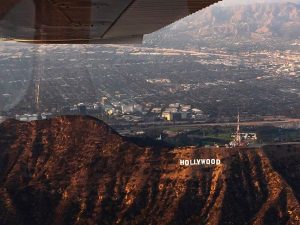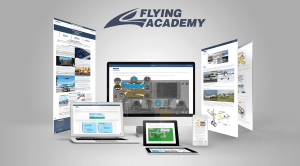What is Commercial Pilot License CPL(A)?
The Commercial Pilot License training is usually one of the last steps in becoming a professional pilot. To find out more about how to become a professional pilot, please click here.
The Commercial Pilot Certificate is a qualification that permits the holder to act as the pilot of an aircraft for remuneration, i.e. to get employed as a pilot.
What are the Commercial Pilot License – CPL(A) course entry requirements?
The Commercial Pilot License – CPL(A) course entry requirements are as follows:
- To be at least 18 years old
You need to be at least 18 years old. - To have at least Class 2 Medical certificate
You need to be physically fit for flying and capable of holding a second class medical certificate. - To have at least a Private Pilot License
You need to have at least FAA Private Pilot License – PPL(A). - To be proficient in the English language
You need to be able to read, write, understand and speak English in a fluent way.
Federal Aviation Administration (FAA) Aviation English Language Standard (AELS).
An individual who holds an FAA certificate or an applicant for an FAA certificate or rating, per the eligibility requirement of the respective certificate, should continuously demonstrate the ability to read, write, speak, and understand the English language.
What can I do with my Commercial Pilot License – CPL(A)?
The Commercial Pilot License allows you to act as the pilot of an aircraft for remuneration and
- Act as co-pilot (First Officer) in commercial air transportation,
- Act as pilot-in-command or co-pilot of any airplane engaged in operations other than commercial air transportation,
- Act as pilot-in-command in commercial air transportation of any single-pilot airplane.
How can I get my Commercial Pilot License – CPL(A)?
Step 1: Start the Ground and Flight training
The ground and Flight training are combined during the whole preparation in obtaining the
Commercial Pilot License.
Ground training
The Ground training is the theoretical part of the training that takes place in the classroom and is taught by our flight instructors, certified by the FAA. In order to complete The Instrument Rating under Part 141, there is a minimum requirement of 35 hours of ground training.
The Ground Training is divided into 3 stages and will cover the following topics. During the ground school training, the student will have 3 exams, one for each stage.
- Airspace/Airports, Weather (VFR) Charts
- Pilotage/Dead Reckoning (VFR)
- Cross-Country Procedures (VFR)
- Aviation Physiology
- Aeronautical Decision Making
- Commercial FARs
- High Performance Powerplants
- Environmental and Ice Control Systems
- Retractable Landing Gear
- Complex Aircraft Transition
- Advanced Aerodynamics
- Predicting Performance
- Controlling Weight and Balance
- Commercial Flight Maneuvers
- Maximum Performance Takeoffs and Landings
- Steep Turns and Chandelles
- Lazy 8s, Pylon 8s, Steep Spirals, and Accuracy Landings
- Emergency Procedures
- Commercial Decision Making
The student will obtain the aeronautical knowledge and obtain the prerequisites in the FAR/AIM for the FAA Commercial pilot Knowledge test.
Flight Training
The Flight Training will take place in the single-engine aircraft and in a single-engine complex aircraft. A complex airplane is A complex airplane is defined by the United States, Federal Aviation Administration as an aircraft that has all of the following:
- A retractable landing gear
- A controllable-pitch propeller (which includes constant-speed propellers)
- Movable or adjustable flaps.
In order to obtain a commercial pilot license, the pilot must complete a minimum of 55 hours of dual flight under Part 141 and a minimum of 20 hours dual flight under Part 61.
This training will also be divided into three stages and will have three stage flight texts. The student will obtain the necessary aeronautical skill and experience necessary to meet the requirements for a commercial pilot license.
PART 141:
190 hours total time. Must have 120 hours of dual time including in the total.
Must complete 55 hours of training with an instructor in which must include:
- 10 hours under the hood; simulated instruments.
- One 2 hour cross-country that consists on more than 100 nm straight line distance during the day.
- One 2 hour cross-country that consists on more than 100 nm straight line distance during the night.
- 10 hours of training in a SEL complex aircraft .
- 3 hour of training 60 days prior to the checkride.
Student must complete 10 hours solo in which must include:
- One cross-country with landings at a minimum of three points and one segment of the flight must consist of a straight-line distance of at least 250 nm.
- 5 hours of night VFR conditions with 10 takeoffs/landings which must be performed during pattern work.
PART 61:
250 hours total time which must include:
- 100 hours of PIC time flight time which includes at least: 50 hours in cross-country flight of which at least must be in airplanes
20 hours of training with instructor in which includes:
- 10 hours under the hood; simulated instruments
- One 2 hour cross-country that consists more than 100 nm straight line distance during the day.
- One 2 hour cross-country that consists more than 100 nm straight line distance during the night.
- 10 hours of training in a SEL complex aircraft.
- 3 hour of training 60 days prior to the checkride.
Student must complete 10 hours solo in which must include:
- One cross-country with landings at a minimum of three points and one segment of the flight must consist of a straight-line distance of at least 250 nm.
- 5 hours of night VFR conditions with 10 takeoffs/landings which must be performed
during pattern work
Step 2: Pass the theoretical examination before the Checkride
Towards the end of the course, you will have to demonstrate a sufficient level of theoretical knowledge at an FAA approved testing center in the form of a written test.
To pass the commercial pilot written examination you need to achieve a score of at least 70%, which is still a passing score. This test must be done before the Checkride.
Step 3: Pass the Checkride
The final aeronautical knowledge and practical test is the checkride. It will be taken at the end of all the training and consist of an oral and practical exam. Once the student passes this exam, he/she will obtain the Commercial Pilot License. The length of the Checkride varies depending on the FAA examiner.
How much does Commercial Pilot License CPL(A) course cost?
The course price starts from 5030 USD.
No taxes are applied for pilot training in Florida.
The FAA CPL(A) program fee covers the following items and services:
- Flight Instructor time for ground & practical training
- Airplane usage, including fuel. We don’t apply any fuel surchage!
- Bonus – account for Rocket Route flight planning services – valued $300/year
*All training fees are bound to the actual exchange rates of the local currency of the Flying Academy base where the training or a part of the training is provided. Learn more about complete training fees.
How long does it take to complete Commercial Pilot License – CPL(A) training?
The duration of Commercial Pilot License – CPL(A) training depends on the trainee’s time availability for both theoretical and practical training and the minimum duration is 2 months.




